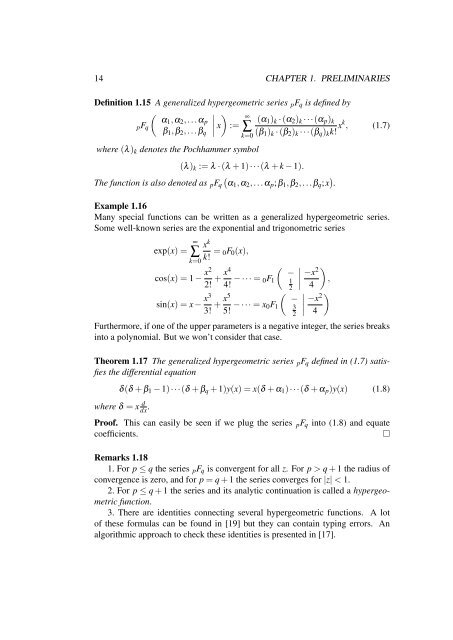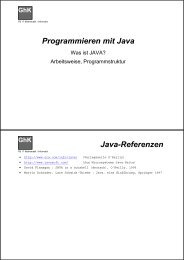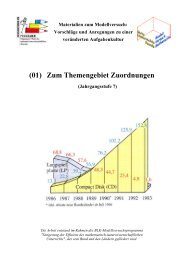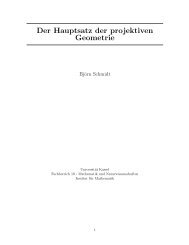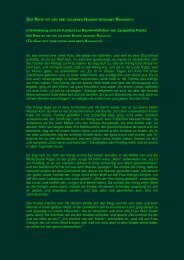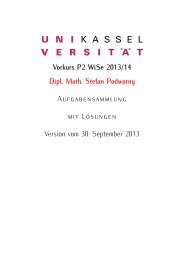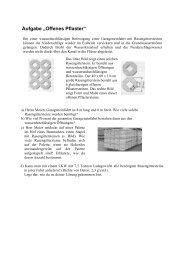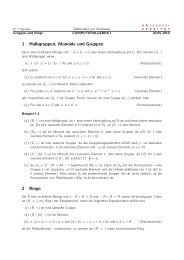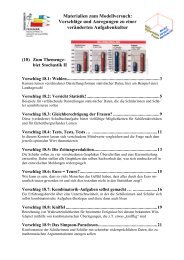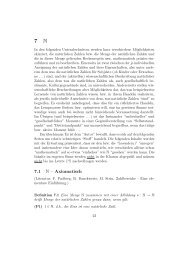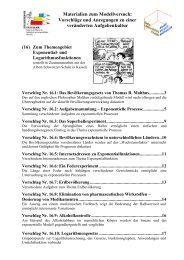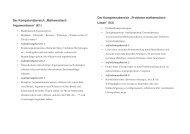Solving Differential Equations in Terms of Bessel Functions
Solving Differential Equations in Terms of Bessel Functions
Solving Differential Equations in Terms of Bessel Functions
Create successful ePaper yourself
Turn your PDF publications into a flip-book with our unique Google optimized e-Paper software.
14 CHAPTER 1. PRELIMINARIES<br />
Def<strong>in</strong>ition 1.15 A generalized hypergeometric series pFq is def<strong>in</strong>ed by<br />
<br />
α1,α2,...αp <br />
<br />
pFq<br />
β1,β2,...βq x<br />
<br />
(α1)k · (α2)k ···(αp)k<br />
:=<br />
(β1)k · (β2)k ···(βq)kk! xk , (1.7)<br />
∞<br />
∑<br />
k=0<br />
where (λ)k denotes the Pochhammer symbol<br />
(λ)k := λ · (λ + 1)···(λ + k − 1).<br />
<br />
The function is also denoted as pFq α1,α2,...αp;β1,β2,...βq;x .<br />
Example 1.16<br />
Many special functions can be written as a generalized hypergeometric series.<br />
Some well-known series are the exponential and trigonometric series<br />
exp(x) =<br />
∞ x<br />
∑<br />
k=0<br />
k<br />
k! = 0F0(x),<br />
cos(x) = 1 − x2 x4<br />
+<br />
2! 4! − ··· = 0F1<br />
s<strong>in</strong>(x) = x − x3 x5<br />
+ − ··· = x0F1<br />
3! 5!<br />
−12<br />
−32<br />
<br />
<br />
<br />
−x<br />
<br />
2 <br />
,<br />
4<br />
<br />
<br />
<br />
−x<br />
<br />
2 <br />
4<br />
Furthermore, if one <strong>of</strong> the upper parameters is a negative <strong>in</strong>teger, the series breaks<br />
<strong>in</strong>to a polynomial. But we won’t consider that case.<br />
Theorem 1.17 The generalized hypergeometric series pFq def<strong>in</strong>ed <strong>in</strong> (1.7) satisfies<br />
the differential equation<br />
δ(δ + β1 − 1)···(δ + βq + 1)y(x) = x(δ + α1)···(δ + αp)y(x) (1.8)<br />
where δ = x d dx .<br />
Pro<strong>of</strong>. This can easily be seen if we plug the series pFq <strong>in</strong>to (1.8) and equate<br />
coefficients. <br />
Remarks 1.18<br />
1. For p ≤ q the series pFq is convergent for all z. For p > q + 1 the radius <strong>of</strong><br />
convergence is zero, and for p = q + 1 the series converges for |z| < 1.<br />
2. For p ≤ q + 1 the series and its analytic cont<strong>in</strong>uation is called a hypergeometric<br />
function.<br />
3. There are identities connect<strong>in</strong>g several hypergeometric functions. A lot<br />
<strong>of</strong> these formulas can be found <strong>in</strong> [19] but they can conta<strong>in</strong> typ<strong>in</strong>g errors. An<br />
algorithmic approach to check these identities is presented <strong>in</strong> [17].


